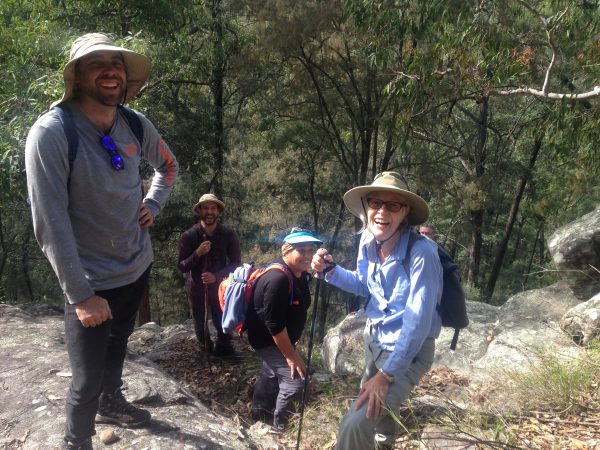Let Go!

You were curious about Zen Buddhism so one day you turned up at an orientation. You liked the silence and the challenge of paying attention and so you came back. Soon it became a regular part of your life. You listened to podcasts, found some helpful apps and read widely about the Buddha’s enlightenment. You believed the best was yet to come, and that if you sat for Ten Kalpas and several sesshin each year you would become a Buddha.
But the seconds, minutes, days, weeks and maybe even years flow by, and this thing called realisation is still just a word. Sometimes you feel like giving up. Then you do.
“I can’t go on! I’ve had it!”
Congratulations, you have just arrived at dana, relinquishment, letting go, the first of the Paramitas. Let go! Let go of the thought of realisation, let go of the thought of failure too.
A monk asked Hui-Hai, ‘By what means can the gateway of our school be entered?”
Hui-hai said, ‘By means of the Dana Paramita.”
The monk said, “According to the Buddha, the Bodhisattva Path comprises six Paramitas. Why have you mentioned only the one? Please explain why this one alone provides a sufficient means for us to enter.”
Hui-hai said, “Deluded people fail to understand that the other five all proceed from the Dana Paramita and that by its practice all the others are fulfilled.”
The monk asked, “Why is it called the Dana Paramita?”
Hui-hai said, “‘Dana’ means relinquishment.”
The monk asked, “Relinquishment of what?”
Hui-hai said, “Relinquishment of the dualism of opposites, which means relinquishment of ideas as to the dual nature of good and bad, being and non- being, void and non-void, pure and impure. By giving all of them up, we attain to a state in which all opposites are seen as void.”
Hui-hai then outlines the various other Paramitas one by one, though I’ll only include a few here: “Bodhisattvas, being beguiled by nothing may be said to have fulfilled the silaparamita, also known as observing the Precepts: clinging to nothing, they may be said to have fulfilled the viryaparamita, also known as exercising zeal; dwelling on nothing, they may be said to have fulfilled the dhyanaparamita, also known as practising dhyana and samadhi”, and so on. Then he comes to the point:
“You only have to understand that, by a single act of relinquishment, EVERYTHING is relinquished; and that ‘no arising’ means ‘no arising’ of anything whatsoever. Those who have lost their way have no intuitive understanding of this: that is why they speak of the methods (of practice) as though they differed from one another. I exhort you students to practise the way of relinquishment and nothing else, for it brings to perfection not only the other five Paramitas but also myriads of dharmas.”
Bodhidharma said, ‘In the realm of the One, not holding dualistic concepts of ordinary beings and sages is called the Precept of Not Defaming the Three Treasures.’
And centuries later, Master Keizan put it this way: “If you could simply see that One’s original, unchanging Self-nature is neither saintly nor ordinary, neither deluded (nor enlightened), then hundreds of thousands of teachings and incalculable numbers of subtle principles all abide in the Mind-source…..If you do not reach this realm, you will be agitated by feelings about delusion and awakening.”
So, let’s relinquish preoccupations with realisation, with status, with gaining, with attainment – that is dana, the self forgotten, the ‘I’ no longer at the centre of the universe.
Aitken Roshi says, “The implication of dana for lay people in Classical Buddhism was that you give as you can afford to give. This is quite different from ‘dropping off body and mind’. In a very real sense we are practising dana in our zazen, letting everything else go – all preconceptions and patterns that hold us together, all of what we must do in order to maintain what we are. Let go. Let go.”
A monk asked Ch’ing-jang of Hsing-yang, “Ta-t’ung Chih-sheng Buddha did zazen on the Bodhi Seat for Ten Kalpas, but the Dharma of the Buddha did not manifest itself, and he could not attain Buddhahood.”
Ch’ing-jang said, ‘Your question is exactly to the point.”
The Monk said, “But he did zazen on the Bodhi Seat: why couldn’t he attain Buddhahood?”
Ch’ing-jang said, “Because he is a non-attained Buddha.”
These non-attained Buddhas are no other than ourselves, just as we are, struggling with our own particular anxieties and concerns, our doubts that it shouldn’t be like this, it couldn’t be like that, our struggles to attain realisation. See these thoughts and feelings arising, give them up and come back to this! Always come back.
There is, after all, nothing to attain.
Encouraging words were written by Gillian Coote, roshi and have been published in the April/May 2018 Newsletter






